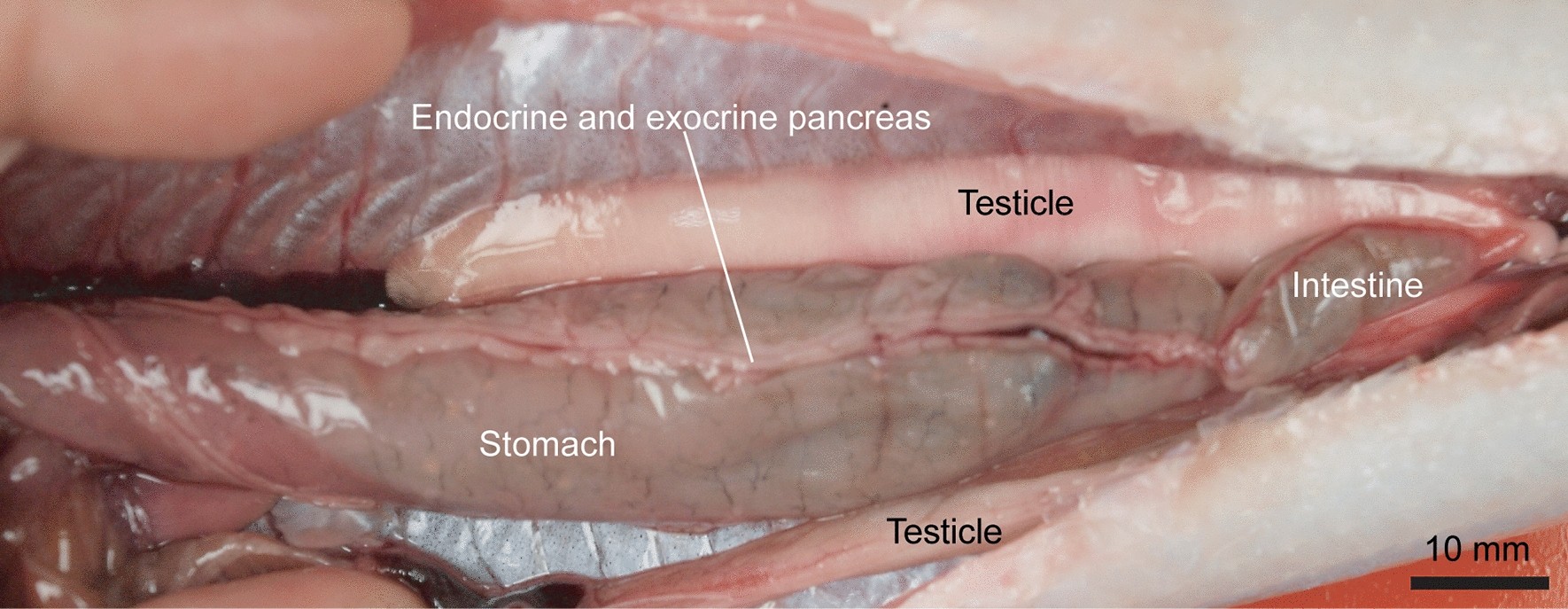Digestive glands
a) The Liver:
- It is the site of glycogen storage, it produces a variety of substances, including enzymes that help with the digestion and it is a major chemical factory producing various hormones as well as numerous other important molecules.
- The liver has no specific shape in fish and generally molds itself into the space around the stomach and the heart.
- Bile is secreted from the liver and pour into the duodenum region of the intestine and cardiac part of intestinal bulb.
- The liver usually has two separate lobes, but it may have only one (some members of the Salmonidae) or even three as in the Mackeral (Scomber scomber).
- The gall bladder is usually found somewhere within the liver, it secretes substances that attack fats and help them to be broken down.
- The liver always has at least one, and sometimes as many as eight ducts leading into the first part of the intestines.

b) The Pancreas:
- The pancreas which is exocrine and endocrine organ may be discrete organ or it may be diffused in liver or in the alimentary canal.
- The Pancreas is well developed in the lungfish, sharks and rays and most juvenile fish, however in many teleosts it becomes quite reduced and diffuse in the adults.
- In sharks and rays it is quite distinct from the liver, but in those teleosts wherein it is found it is often partially embedded in the liver. It is also diffused in the alimentary canal in few fishes.
- The pancreas secretes enzymes such as trypsin (attacks proteins), amylases (attack carbohydrates) and lipases (attack fats) into the intestines either through sharing one of the hepatic ducts (those belonging to the liver), or through its own pancreatic duct.
- The exocrine cells are found in periphery placed. The endocrine cells are also called Islet of Langerhans that secrete insulin.
- But exocrine secretion is called pancreatic juice in which mostly amylase enzymes.
